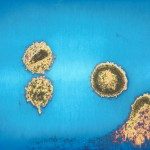Link to Pubmed [PMID] – 21622023
Link to DOI – 10.1016/j.jcv.2011.04.011
J Clin Virol 2011 Jul; 51(3): 186-91
The AIDS epidemic in Southern Brazil has unique features, showing co-circulation of HIV-1 subtypes C, B and recombinant forms. Florianópolis has the second highest AIDS incidence among Brazilian capitals, but limited information is available about HIV molecular epidemiology and prevalence of primary drug resistance.To investigate the molecular epidemiology of HIV-1 in Florianópolis and to describe the prevalence of primary HIV-1 drug resistance mutations (DMRs).Epidemiological and clinical data from 82 untreated patients from Florianópolis (2008-2009) were analyzed. The HIV-1 subtype at envelope, protease, reverse transcriptase and integrase regions were determined by phylogenetic and bootscaning analyses and the drug resistance profile were analyzed at the Stanford HIV Drug Resistance Database.The most frequent HIV-1 genetic form was subtype C (65.8%) followed by mosaics BC (18.3%), subtype B (13.4%), subtype F1 (1.2%) and BCF1 recombinant (1.2%). HIV-1 subtype C and BC recombinants were much more frequent in the heterosexual exposure category, whereas subtype B was more common in the MSM exposure category. DRMs were seen in 11% of the sequences, 2.4% of them were related to PI, 5% to NRTI, 3.6% to NNRTI and 1.2% was related to INTI.The present study confirms the high prevalence of subtype C and BC recombinants in Santa Catarina State and revealed a significant difference in the subtype distribution among distinct virus exposure categories. This study also shows a relative high prevalence of protease/reverse transcriptase primary drug resistance mutations and corroborates the usefulness of the integrase inhibitors in southern Brazil.


